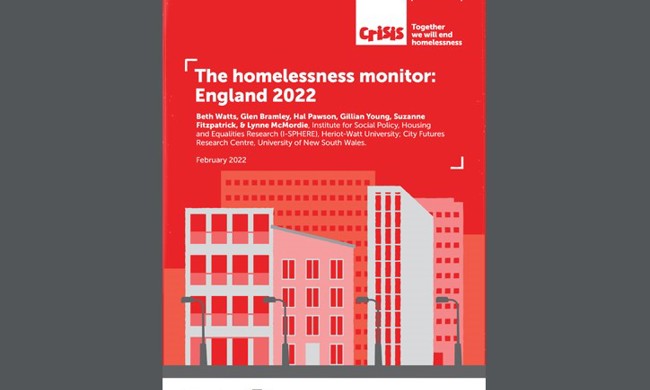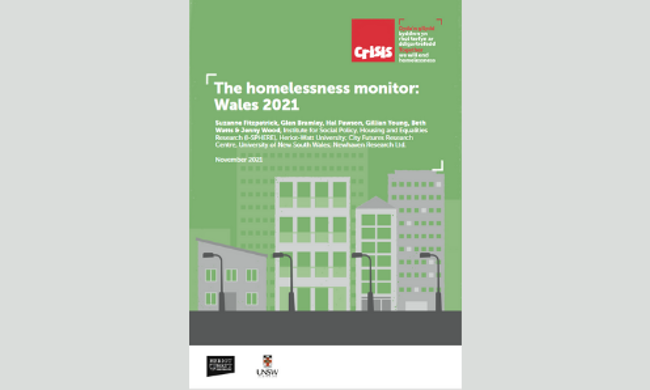The Homelessness Monitor: Great Britain 2022
05.12.2022
The Homelessness Monitor: Great Britain 2022 was commissioned by Crisis and led by Heriot-Watt University, as part of the Homelessness Monitor series, a longitudinal study providing independent analysis of the homelessness impacts of recent economic and policy developments in Great Britain. The research takes stock of homelessness in 2022 and the five year period before this. It also highlights emerging trends and forecasts some of the likely future changes, identifying the developments likely to have the most significant impacts on homelessness.
Key Findings
-
Levels of ‘core’ (i.e. the most extreme forms of) homelessness are consistently higher in England (0.84% of households in 2020) than in either Wales (0.68% of households in 2020) or Scotland (0.57% of households in 2020). The number of core homeless households are projected to grow further in England, particularly in London, unless policy steps are taken to correct this negative direction of travel.
-
Statistical modelling indicates that the most effective policies for reducing core homelessness include: rehousing quotas for core homeless groups in the social rented sector; increasing the Local Housing Allowance rate; raising the level of Universal Credit payments; expanding Housing First interventions; and maximising the use of prevention tools by local authorities. Such policies in concert could reduce total core homelessness by 34% in England, 30% in Wales, and 42% in Scotland.
-
Both Wales and Scotland have devised plans aimed at ‘ending’ homelessness in their respective jurisdictions, with a strong emphasis on Rapid Rehousing approaches and, within that, Housing First interventions for those with the most complex support needs. In England, in contrast, there is a narrower strategic focus on ending rough sleeping only.
-
Scotland has a social rented housing sector that is substantially larger, relative to population size, than either of the other two Great Britain jurisdictions, and the Scottish government has committed to building 110,000 affordable homes by 2032 of which at least 70% should be available at social rent. Scottish Government per capita expenditure on both Local Welfare Assistance and Discretionary Housing Payments is also much higher than elsewhere in Great Britain. In large part this reflects the Scottish Government’s decision to fully mitigate the ‘Bedroom Tax’ using these payments. In contrast, recent cuts in Discretionary Housing Payments allocations in England and Wales leave many more households at risk of homelessness, while the very existence of Local Welfare Assistance schemes in much of England remains uncertain.
-
Temporary accommodation placements involving families with children are notably higher in England than in either of the other two Great Britain countries, and the use of Bed and Breakfast hotels has grown four-fold over the past decade. Temporary accommodation placements are forecast to almost double in England over the next twenty years, while remaining relatively stable in Scotland and Wales.
-
These trends have driven mounting temporary accommodation costs in England, while expenditure on support, administration and prevention has been progressively squeezed down. This spending profile flies in the face of the early intervention aims and philosophy of the Homelessness Reduction Act.
-
The United Kingdom economy has now rebounded from the COVID-19-induced slump, but spiralling energy, food, and other prices, now seriously compounded by the Ukraine war, are driving a cost-of-living crisis greater than that seen for many decades. While the United Kingdom Government has recently announced a package of measures designed to ease this crisis, the poorest households will still be hardest hit over this coming winter.
Downloads

The Homelessness Monitor Great Britain 2022 - Full Report
The Homelessness Monitor Great Britain 2022 - Full Report

The Homelessness Monitor Great Britain 2022 - Executive Summary
The Homelessness Monitor Great Britain 2022 - Executive Summary





